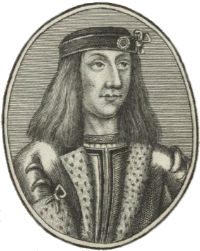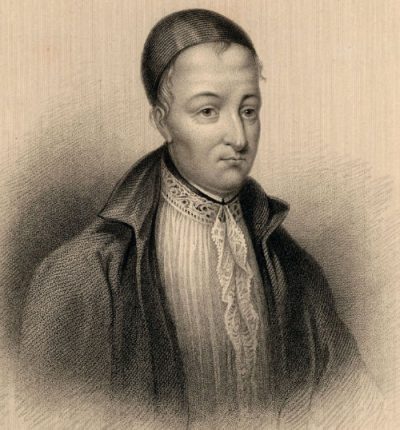The Influence of English

Gaelic was not abandoned by every king who came after Malcolm Canmore
Robert the Bruce
The army of Robert the Bruce (King of Scotland between 1306-1329) defeated the army of King Edward II of England at the Battle of Bannockburn in 1314.
The standard which Robert the Bruce carried into the battle was the Brecbennoch of St Columba. This is the most sacred relic of Gaelic Scotland, which is thought to contain the remains of St Columba.
The effect of war on the Gaelic-speaking population
The use of English in everyday speech increased when parts of southern Scotland were occupied by victorious English forces after the wars.
It is also probable that the number of Gaelic-speakers in southern Scotland was reduced because of the number of people who died in battle.
This removed leaders from the population and women would have had to marry incomers to the area.
James IV
James IV learned the language of his Highland subjects and he was the last Gaelic-speaking monarch of Scotland.
He had a great interest in Highland music, and he employed many Highland servants and harpers.


English and French influence over Gaelic
England came under Norman-French influences after the Battle of Hastings in 1066. The battle was fought between the Norman-French army of William, Duke of Normandy and an English army under the Anglo-Saxon King, Harold Godwinson.
The Norman army defeated the Anglo-Saxon army at Hastings.
The Normans came originally from Normandy, a region of Northern France.
Following the Norman conquest of England, French became the language of government and business.
The Normans blended French and Old English and that gave us modern English.
Norman-French speech gave way to English among the aristocrats in England, but feudalism in Scotland brought Anglo-Normans to settle when they were granted lands by the Crown in exchange for service or labour.


These incomers spoke French, not English.
As a result, French became the main language in the Scottish court – there was no direct shift from Gaelic to English.
There is evidence that Gaelic survived during the middle ages. This includes Gaelic names being used in documents in central and southern Scotland, and public officials with Gaelic names, for example the brehon: the britheamh or judge.

Gaelic stopped being the daily language of central Scotland between 1157 and 1400.
English began to be used for official documents in the 12th century.
Gaelic names recorded in documents are evidence of the survival of Gaelic amongst Lowland Sots and in the north-east; the Book of Deer records land grant entries in Gaelic.

Feudalism
Under feudalism, people were given land in return for service or labour.
Because of feudalisation in Scotland, many new people came into the country. They had different ways of doing things and different ways of interacting with other people.
Feudalism attracted Angles from Northumbria to Lothian and they settled there in the 11th and 12th centuries.
Merchants and craftsmen from England began to establish burghs with markets north of the border.
Later, about 1527, a Scottish historian called Hector Boece spoke of English people living in Scotland.
He said, ‘Those of us who live on the borders of England have forsaken our mother tongue and learned English.
Wars and trading made us do this, but the Highlanders are still just as they were at the time of Malcolm Canmore.
It was in his days that we began to use English.’
In his comment, he makes a clear distinction between the Highlands and the Lowlands.


Downloads

